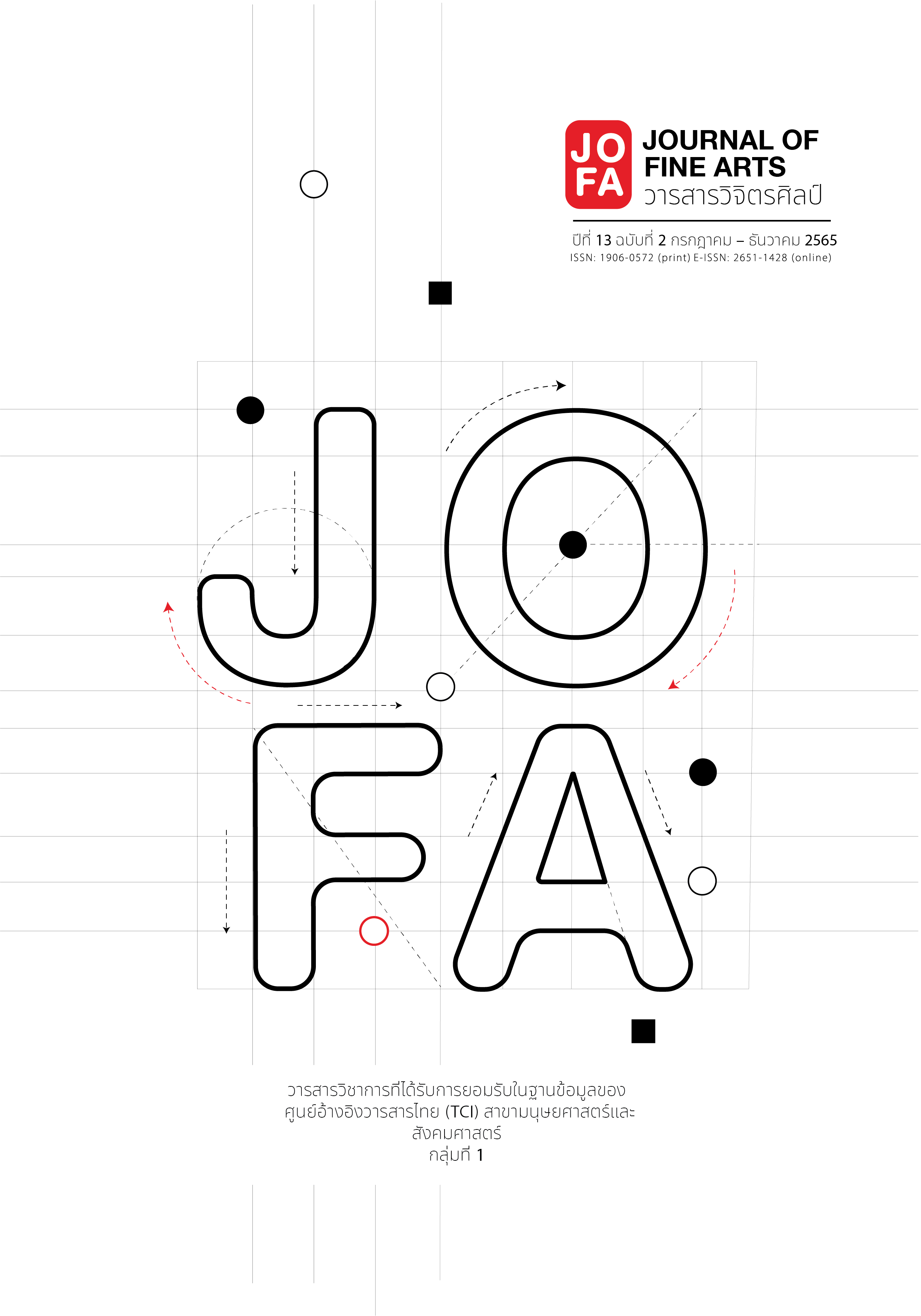Pra Maha Stupa Chaitya Design guideline
Main Article Content
Abstract
This paper has two objectives. The first objective is to understand the design concepts of Pra Maha Stupa Pagoda in Buddhism principles, which view a stupa as a place that has been designed to provide a spiritual space that encourages human beings to comprehend their life paths towards nirvana. The second objective is to identify and analyze the design concepts of Pra Maha Stupa Pagoda as the spiritual center, serving as a place to cultivate peaceful mind, concentration, and wisdom with connection to the development of human body and mind. These can be done on the basis of the three studies (Tri Sikkha) principle encompassing morality, concentration, and wisdom. The principle also refers to the noble path, an essence part of the Four Noble Truths. The pagoda also carries symbolic meaning to serve Buddhists and people worldwide. Furthermore, it has been created to serve suitable life and function as a sacred place to fulfill spiritual needs to calm minds and to promote consciousness. The pagoda is also designed to concur with natural ways of living and spiritual development towards happiness, calmness and enlightenment.
Article Details

This work is licensed under a Creative Commons Attribution-NonCommercial-NoDerivatives 4.0 International License.
References
Earthtrekker. “Through the Doorway.” Earthtrekker. Accessed January 4, 2018. https://www.earthtrekkers.com/myanmar-17-amazing-photos/through-the-doorway-2.
Falconer, J. and Invernizzi, L. Burmese Design & Architecture. Singapore: Periplus, 2000.
Fickr. “Palace Beijing China.” Fickr. Accessed January 6, 2018. https://www.pinterest.com/pin/138063544796940854.
Gettyimages. “Yan Gyientry Temple Bagan.” Gettyimages. Accessed January 4, 2018. https://www.gettyimages.com/photos/dhamma-yan-gyi-temple.
Hugchiangkham. “Chon Chāttiphan Lāhū Mūsœ̄. [Lahu Village Chiang rai Province].” Hugchiangkham. Accessed January 15, 2020. https://cmu.to/WMvot.
Maka, P. “Rīwio Wat Ton Kawēn. [Indrawat Temple Chiang Mai Province].” Painaidii. Accessed December 20, 2017. http://www.painaidii.com/review/112342/wat-tonkain-50230/lang/th.
Manoelwilliarn. “Temples of Bagan Myanmar.” Manoelwilliarn. Accessed January 4, 2018. https://www.pinterest.com/pin/215258057169044482/.
Nongnit.“Thai-sprit house.” Nongnit. Accessed January 6, 2018. http://www.nongnit.net/thai_spirit_house4.html.
Oranratmani, R. Rūpbǣp Bānrư̄an Khō̜ng Klum Chāttiphan Nai ʻUsākhanē. [Home styles of ethnic groups in Southeast Asia]. Chiang Mai: Chiang Mai University, 2013.
Pinterest. “Dhamek stupa india.”Pinterest. Accessed December 4, 2017A. https://www.pinterest.com/pin/817403401109934377/.
Pinterest. “Bedse Caves india.” Pinterest. Accessed December 4, 2017B. https://in.pinterest.com/pin/839076974297492161/.
Piyachon, C. Sō̜radok Khrư̄ang Din Phao Thai Tukkatā Læ Pratimākam. [Heritage of Thai pottery, dolls and sculptures]. Bangkok: Muang Boran, 2001.
Tutorialto. “Padang House.” Tutorialto. Accessed December 31, 2017. https://www.pinterest.com/pin/769060073849860296.
Varlord. “Borobudur.” Brainly. Accessed December 20, 2017. https://brainly.co.id/tugas/2544575.


